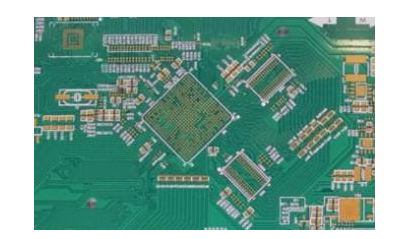The requirement of the upper backing plate for PCB circuit board drilling is to have a certain surface hardness to prevent burrs on the upper surface of the drilling. But it should not be too hard and wear the drill bit. It is required that the resin composition of the upper and lower backing plates should not be too high, otherwise molten resin balls will be formed and adhered to the hole wall during drilling. The larger the thermal conductivity, the better, so as to quickly take away the heat generated during drilling, reduce the temperature of the drill when drilling the hole, and prevent the drill from annealing. There must be a certain rigidity to prevent the plate from shaking when the drill is lifted, and a certain elasticity to deform immediately when the drill bit is in contact with the drill, so that the drill bit can be accurately aligned with the position to be drilled to ensure the accuracy of the drilling position. The material should be average without impurities that produce uneven nodes, otherwise the drill bit will be easily broken. If the surface of the upper backing board is hard and slippery, the small diameter drill bit may slip and deviate from the original hole to drill an oblique elliptical hole on the PCB circuit board.

The upper backing board used in China is mainly 0.2~0.5mm thick phenolic paper rubber sheet epoxy glass cloth board and aluminum foil such as LF2Y2 (No. 2 anti-rust aluminum semi-cold hardened state or LF21Y(21) with a thickness of 0.3mm No. rust-proof aluminum cold work hardened state) as the upper backing plate for ordinary double-sided drilling, it can prevent burrs on the upper surface of the drilling by achieving a suitable hardness. Because of the good thermal conductivity of aluminum, it has rigidity and elasticity, which has a certain heat dissipation effect on the drill. Compared with phenolic plate, the material of aluminum foil has no impurities on average, and the probability of breaking drills and partial holes is much less than that of phenolic plate. It can reduce the drilling temperature and is an environmentally friendly material. Compared with phenolic board and epoxy board, the holes will not be contaminated by the resin due to the resin contained. The thickness of aluminum foil is usually selected as 0.15, 0.20, and 0.30 mm in the process of use. In actual use, the thickness of the aluminum foil is 0.15 and the surface of the board. The contact is the best, but the process is not easy to control during cutting, transportation and use. The price of 0.30 is a bit higher. Generally, 0.20 mm aluminum foil is used as a compromise, and the actual thickness is generally 0.18 mm.
There is a composite upper backing board abroad, the upper and lower two layers are 0.06mm aluminum alloy foil, the middle layer is a pure fiber core, and the total thickness is 0.35mm. Don’t be embarrassed, this structure and material can meet the requirements of the upper backing plate for printed board drilling. It is used for the upper backing plate of high-quality multilayer PCB. Compared with aluminum foil, its advantages are: high drilling quality and hole position accuracy High, due to wear and tear, the life of the small drill bit is improved, and the original shape of the plate after being subjected to external force is much better than that of aluminum foil, and the weight is also much lighter. It is especially suitable for drilling small holes.
Phenolic paper boards, cardboard, and wood chipboards are used in China. The cardboard is relatively soft and easy to produce burrs, but the average texture is not easy to break the drill bit and bite the drill bit, but the price is cheap, and it can be used in thin copper foil or single-sided board. The wood chip board has a poor average texture and better hardness than paper boards. However, if the copper foil of the drilled PCB circuit board is larger than 35 microns, burrs will occur. I have tried using this board to drill a double-sided board with a 70-micron copper foil. pass through. Phenolic paper board has the best average hardness between the first two, the best use effect, but it is more expensive and not environmentally friendly.
Similarly, there is a composite underlaying board abroad, the upper and lower layers are 0.06mm aluminum alloy foil, the middle layer is a pure fiber core, and the total thickness is 1.50mm. Of course, the performance is very outstanding and environmentally friendly, which greatly exceeds the phenolic paper board, especially when drilling multi-layer PCB and small diameter holes, it can fully reflect its advantages. The disadvantage is of course the price.